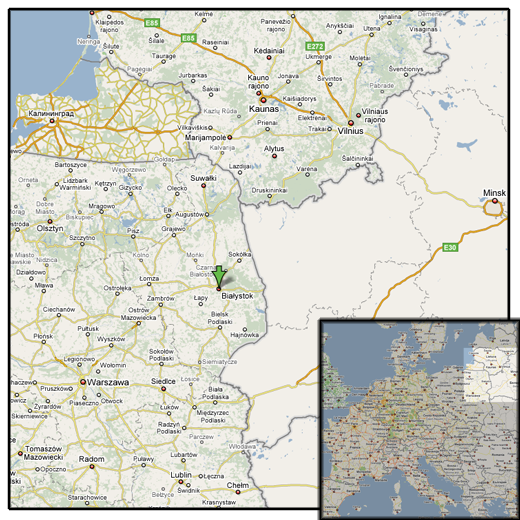I returned from New York City with a supply of foods hard to find elsewhere, including extra-salty belly lox, chocolate babka, and a bakers half-dozen bialys.
“Isn’t that the bagel’s bastard cousin?”
There’s not a retort icy enough for that one, so I just stayed silent. Feh, if others don’t appreciate them, there’s more bialys for me. I used to inquire at bagel places outside of New York City if they had bialys. The good answer was “no, sorry” the usual answer was “what?” and the worst answer turned out to be “sure” pointing to something that was definitely not a bialy. I stopped asking.
In this spirit of instructing all four kinds of child, this is a bialy:

It measures about 4 inches across, maybe 3/4 of an inch thick at the thickest to barely 1/8 inch in the thin center. The center contains some shredded onion, and in some versions, poppy seeds. It’s baked but not boiled (as bagels are) and has a crunchy upper surface and a chewy somewhat salty interior. Useful comparisons include pizza crust and English muffin, but not bagel. It was born in the 19th century in or around Bialystok, Poland. It does not come in cinnamon raisin or sundried tomato basil.
Where’s Bialystok? Deep in the heart of Ashkenaz, that’s where. Northeastern Europe, near the confluence of Poland, Lithuania and Russia/USSR/Belarus. The linguogeek should note that the “Bialy” in Bialystok might just be the same as the “Bela” or “Bylo” of Belarus/Bylorussia, which is бело, the slavic root for “white.”
The best explanation of why this is more than just a roll comes from Mimi Sheraton’s mouth-watering, stomach-churning and heartbreaking book, The Bialy Eaters: The Story of a Bread and Lost World, now also available as an ebook. This book inspires a great deal of navistalgia and should be required reading for bakers, gourmands and Holocaust scholars. The book is full of memories of pre-war Polish jews and the then-regional bialy, both now scattered around the world but absent in Poland.
For a taste of what’s in the book, see this transcript of an interview with Sheraton by Paul Solman of WGBH in Boston. For a hopeful if gaudy sign of the bialy’s future, check this out.


Came upon this searching for a bialy pic. Just to let you know, if you asked in Chicago, you’d get them.
Names, Tara! We need names and addresses!